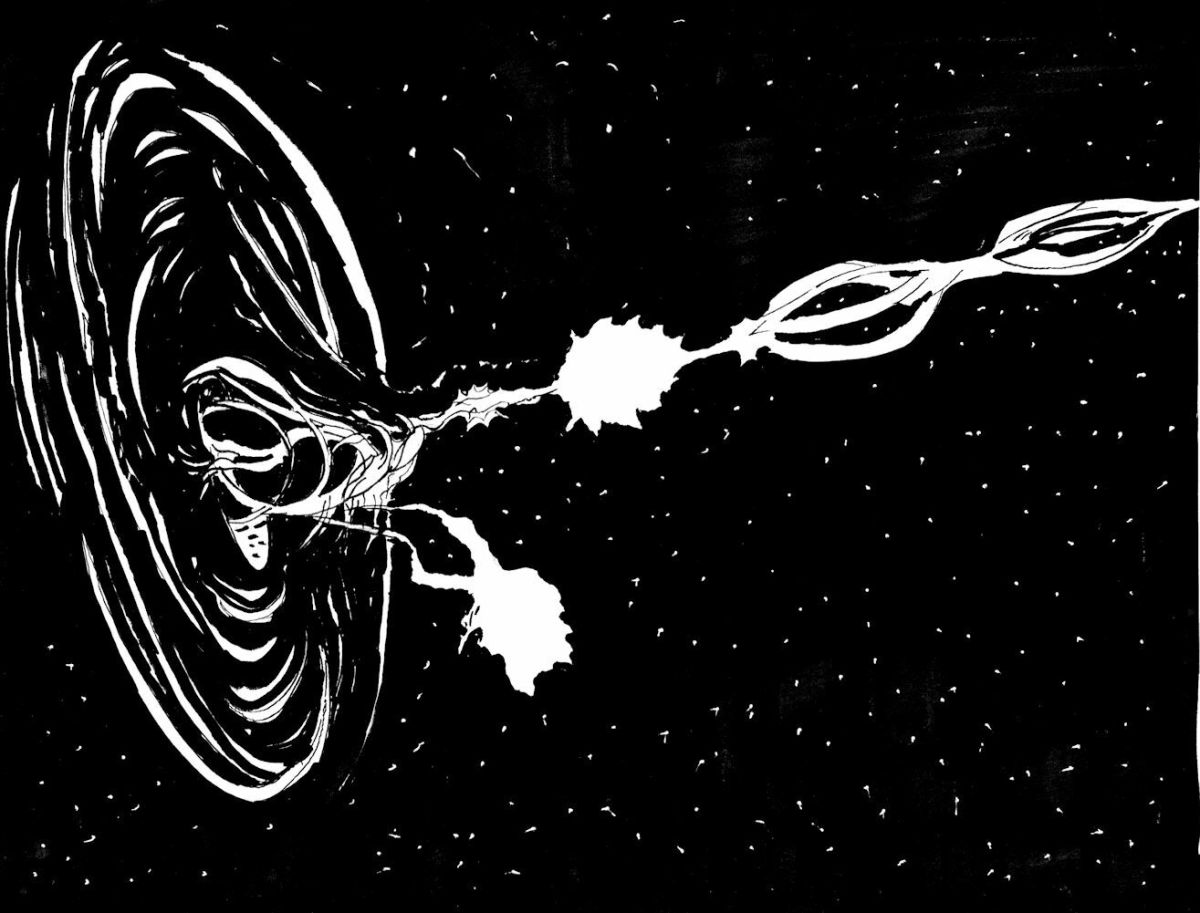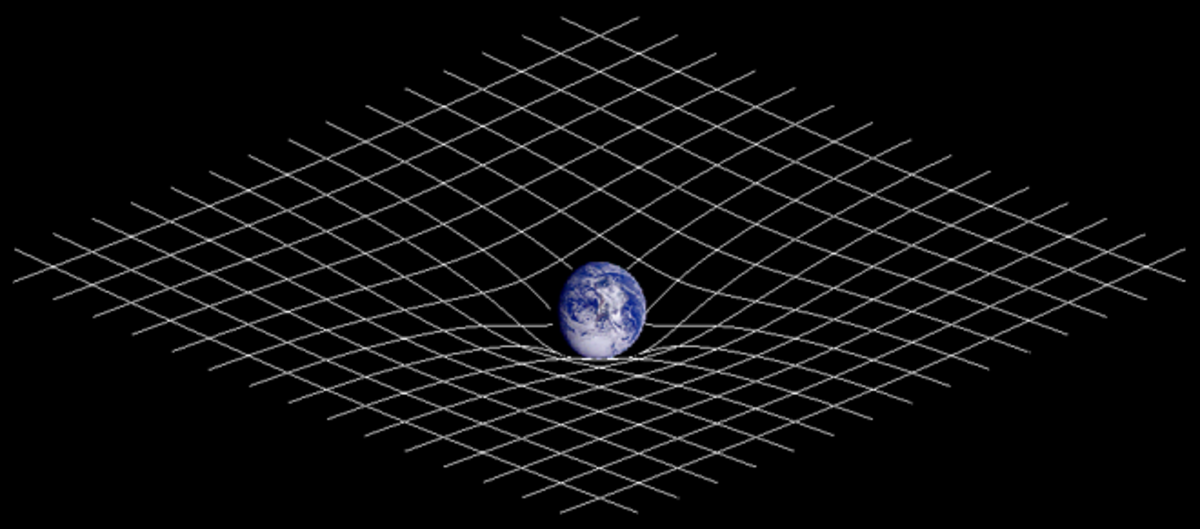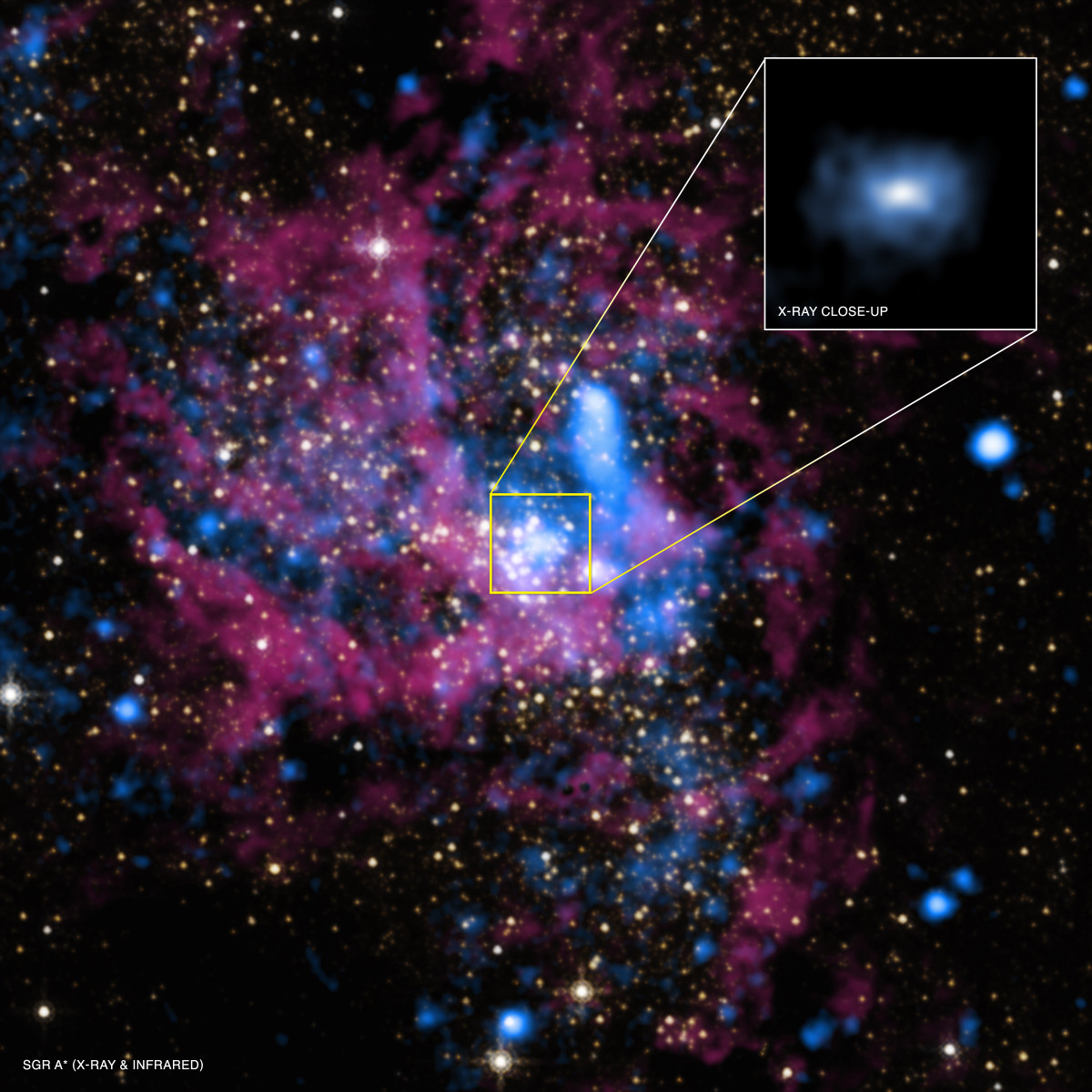Falling Down a Black Hole


By Joan Whetzel
No, you can't fall down a black hole because it's not actually a hole in space. The concept of black holes has been around since the 18th century, though it was not a widely accepted theory at the time. The phrase "black hole" was coined much later, in1967 by John Wheeler, a Princeton University physicist to describe a unique space phenomenona.
What Is a Black Hole?
A black hole contains a huge amount of matter condensed into a very small area of space. Black holes are so dense that it would be like squeezing a piece of matter with a mass that is 10 times greater than our sun into an area of space about the size of New York City. When the the black hole's mass is condensed into such a small area, it also condenses, or concentrates, its gravitational pull, to the point where nothing, including light, can escape.
A black hole is actually what remains of a massive star (10-15 times larger than our Sun) when it dies, leaving behind a dense core. If the mass of that core is greater than 3 times the Sun's mass, the force of gravity that it puts out overpowers all other forces in its vicinity, thereby creating a "black hole." Basically the gravitational pull of the black hole acts like a huge cosmic vacuum cleaner, or tractor beam, that grabs hold of any matter in its vicinity and incorporates the additional matter, which further increases the black hole's density.
The Properties of Black Holes
The main properties of a black hole include:
· They have a gravity field that is too strong for anything, including light, to escape.
· Simple Black holes have mass but no charge and no angular momentum.
· A black hole that has reached a stable state has 3 independent physical properties: mass, charge, and angular momentum
· Charged black holes repel other like charges.
· The mass of the black hole can be found by making measuring the gravitational data using Gauss's Law.
· Any information about the shape of an object falling into a black hole is lost to outside observers.
· When objects entering the black hole's gravitational field reach "the point of no return," The have entered the event horizon.
· Escaping from the event horizon is impossible because it would require moving faster than the speed of light.
· There doesn't seem to be any noticeable difference between the gravitation fields of a black hole and any other astronomical orb of equal mass.
· Black holes can continue to grow larger by absorbing new matter.
· It may be possible for black holes to merge with stars and other black holes.
· Larger black holes can occur when stars collide.
How Are Black Holes Formed?
When small stars die they become dense neutron stars. Black holes are usually formed when a large star dies in a supernova explosion. Most of the giant star's material scatters into space, thanks to the explosive force of the supernova. However, from what matter is left behind, if the star's mass is at least 3 times greater than the Sun, theoretically there is nothing that can prevent that star from collapsing in on itself due to the influence of gravity. As the star collapses, at some point its surface reaches the "event horizon" where it can collapse no further. Since there is no force in nature that can check the gravitational pull, a newly forming black hole can shrink down to zero volume, which is infinitely dense. At this point, it becomes known as a black hole, and anything unlucky enough to get trapped in its orbit cannot escape.
The Hubble Telescope and Black Holes
Black holes don't emit any light or other signals, other than a hypothetical Hawking radiation, which is calculated to be quite weak and nearly impossible to detect from Earth. The caveat to this is that Hawking radiation, while weak, is the last stage of light as it evaporates into the black hole, though searching for this trace of light has not proven fruitful. Locating black holes is dependent on indirect observations. The existence of black holes can be inferred through several indirect observations using telescopes like the Hubble telescope:
· The gravitational interactions between the black hole and its surroundings. If you observe matter and objects being drawn into an otherwise black area of space, then it could be assumed that it's being drawn in by the gravitational pull of a black hole.
· Accretion of Matter. Due to the angular momentum of the black hole (the orbital speed estimated though observations of the distortion it creates in space), gasses and other debris falling into the black hole's gravitational well, will produce a disc-like configuration around the object, in this case, the collapsed star. The friction within the disc-like configuration causes this angular momentum to expand outward, which allows matter fall into the black hole, which in turn, releases potential energy and raises the temperature of the gas. The gas can become so hot that it emits radiation detectable by telescopes, like the Hubble.
· The detection of the Black Hole's effect on nearby matter. If a black hole passes through an interstellar cloud, for instance, it will collect matter from the cloud as it passes through. It can also be detected by the effect that black holes have on other stars in the neighborhood.
Is a Wormhole Anything Like a Black Hole?
Theoretically, a wormhole is a tunnel that could allow rapid transit from one quadrant in space to another or between space and time. However, there is no actual evidence of their existence. According to the theories, all wormholes are black holes, but not all black holes are wormholes. The worm hole is supposedly created from a black hole that is spinning, thus creating a black hole that is deformed into a ring-shape, known as a worm hole, which most probably produces massive amounts of gravitation radiation. So even if they do exist, they aren't expected to be useable channels.
Research
Wikipedia. Black Hole.
http://en.wikipedia.org/wiki/Black_hole
Hubble Site. Black Holes: Gravity's Relentless Pull. Video.
http://hubblesite.org/explore_astronomy/black_holes/
YouTube. Hubble and Black Holes.
http://www.youtube.com/watch?v=oMeWbYD2kw0
YouTube. Black Holes and Worm Holes.
http://www.youtube.com/watch?v=WHRtdyW9ong
National Geographic. Black Holes.
http://science.nationalgeographic.com/science/space/universe/black-holes-article/
NASA Science Astrophysics. Black Holes.
http://science.nasa.gov/astrophysics/focus-areas/black-holes/
Red Orbit. Hubble Discovers Black Holes in Unexpected Places.
http://www.redorbit.com/news/space/18/hubble_discovers_black_holes_in_unexpected_places/
Astronomy Café, What Do Worm Holes Have to Do with Black Holes?









